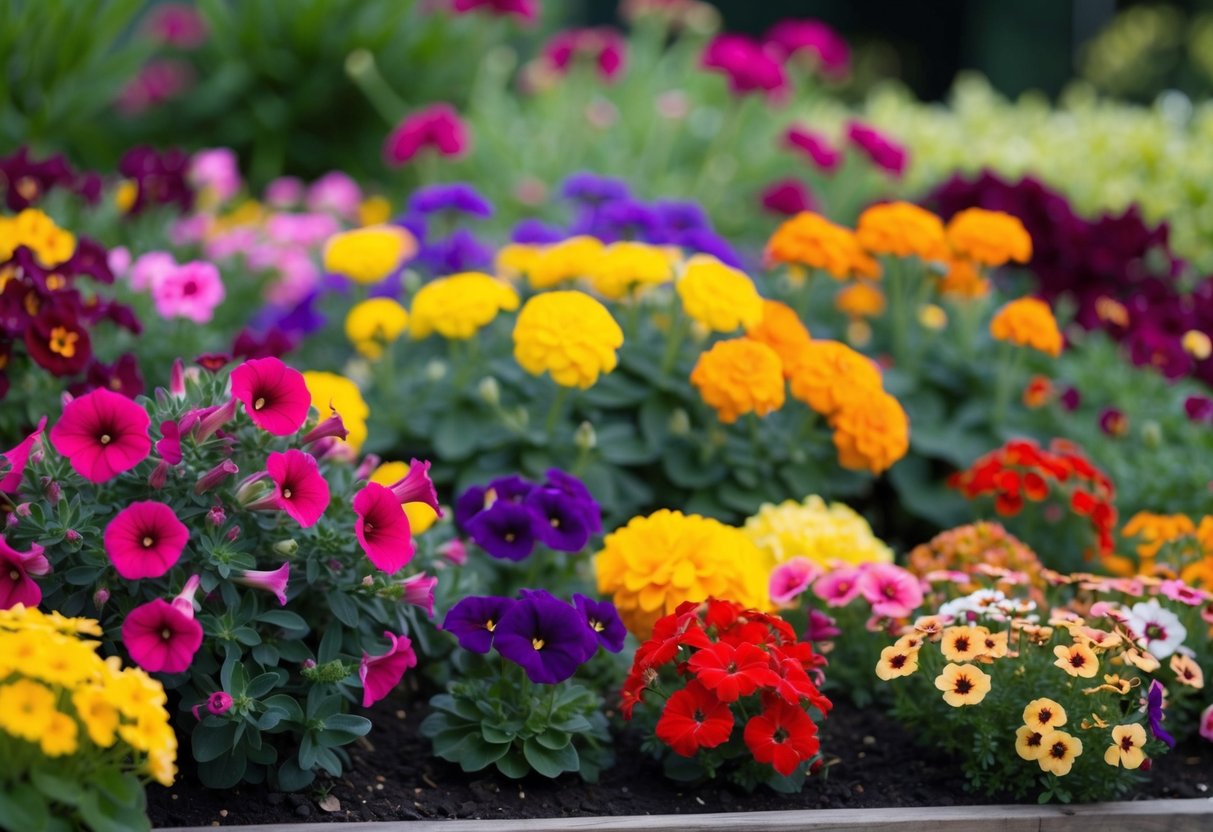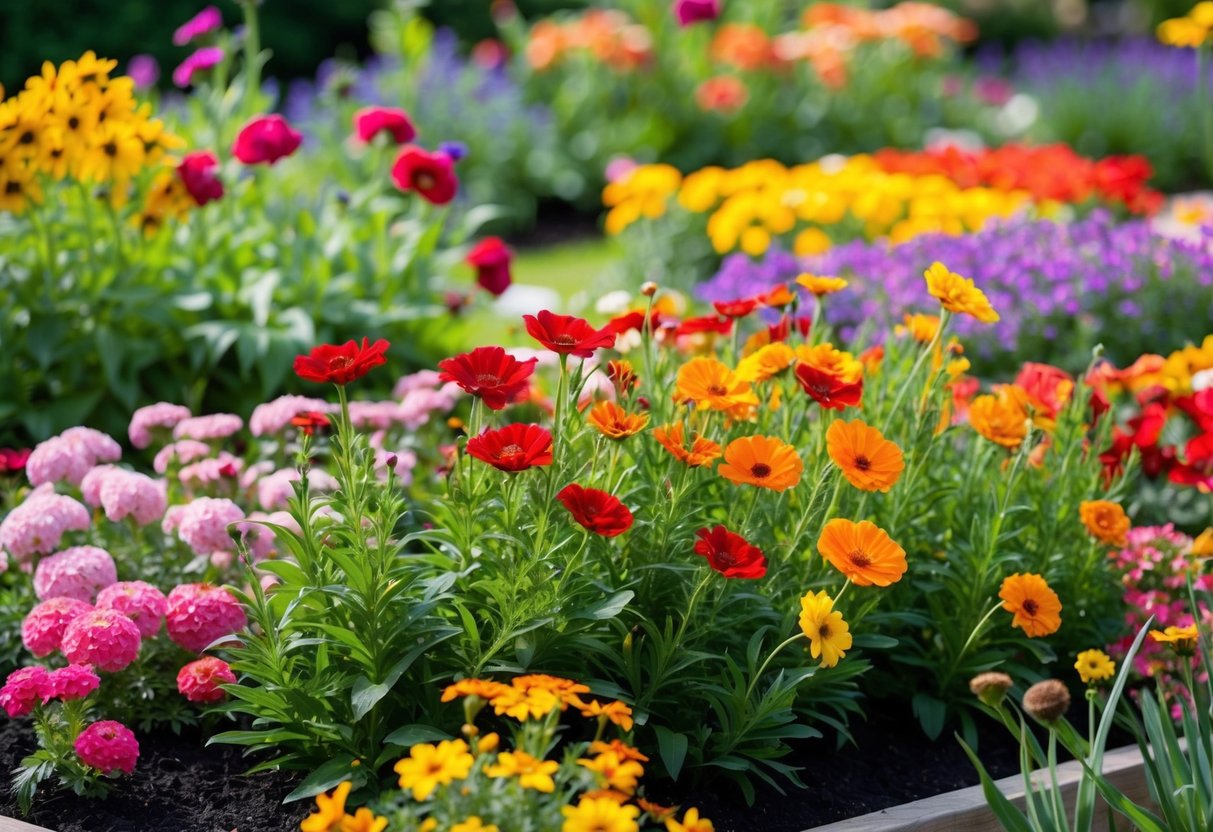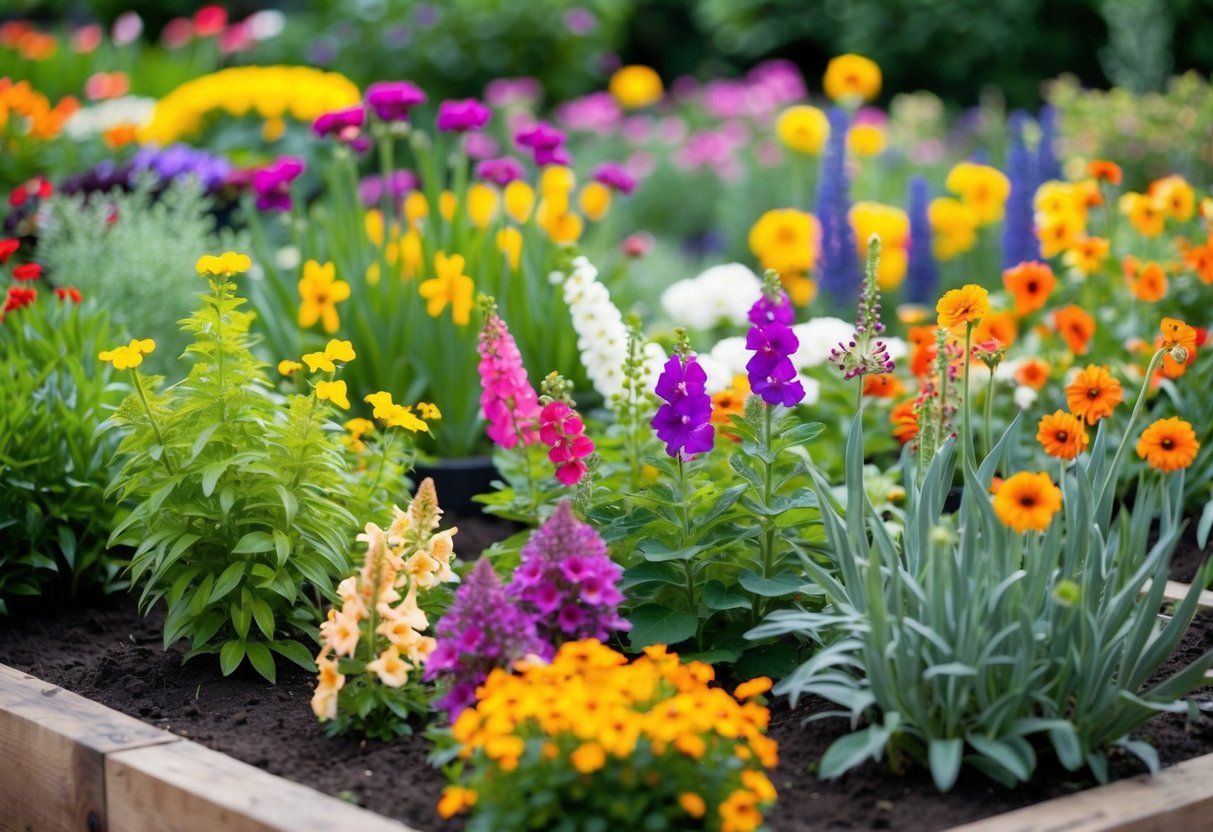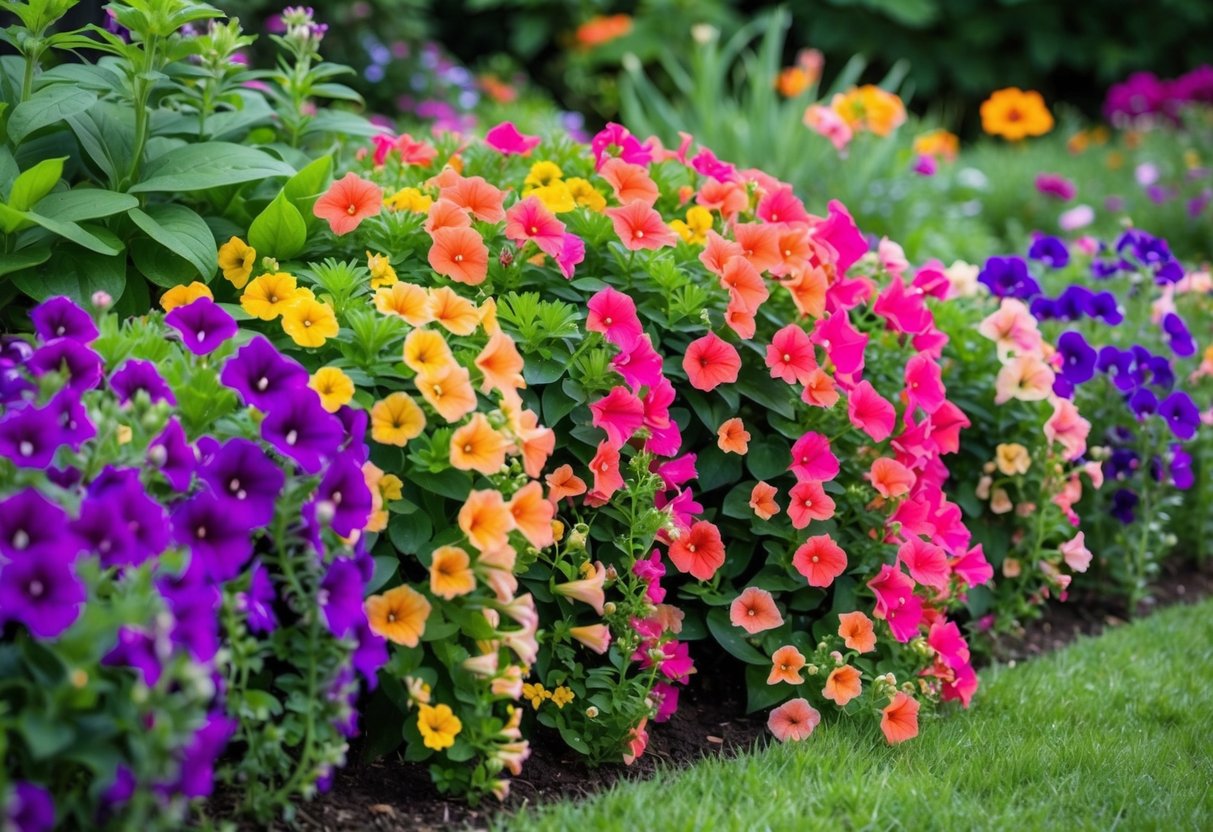What are the Longest Flowering Bedding Plants for Vibrant Gardens?
If you want to fill your garden with long-lasting color, you should explore the wonders of summer bedding plants. Some of the longest flowering bedding plants include varieties like Busy Lizzies and Yarrow. These plants can brighten your space with their vibrant blooms from June to September or even longer. Not only do these plants add charm and beauty, but they also attract beneficial pollinators to your garden.

Imagine a garden where colorful flowers greet you every day. Summer bedding plants, like the Ageratum, create a joyful environment in any sunlit corner or container. Their ability to bloom throughout the summer means you get to enjoy their beauty for months on end.
When choosing plants, it’s helpful to think about their ideal conditions. Some plants, such as the Nicotiana sylvestris, thrive best in well-lit areas and can be perfect for adding a touch of height and fragrance to your garden. Understanding the needs of these plants ensures they will flower beautifully all season long.
Understanding Bedding Plants

Bedding plants bring color and beauty to your garden. You have options like annuals that last one season and perennials that can return for several years. Consider the climate since it impacts the types of plants that will thrive in your garden.
Annuals vs Perennials
Annual plants complete their life cycle in one growing season, then die. They’re great for filling your garden with bold colors for a few months. Common annuals include petunias and zinnias. They need to be replanted each year, which gives you the chance to change the look of your garden annually.
Perennial plants can live for several years. They generally require less maintenance over time. There are two types: tender and hardy perennials. Tender perennials need protection in cold months, as they don’t tolerate frost. In contrast, hardy perennials withstand colder temperatures.
Climate Considerations
It’s important to think about your area’s climate when selecting bedding plants. Some annuals can handle a bit of cold, while others need warm weather to thrive. If you live in a region with harsh winters, hardy perennials might be the best choice as they survive frost and cold.
Tender perennials are ideal for milder climates, but you can still enjoy them in colder areas by bringing them indoors or providing necessary protection during winter. Understanding your climate helps you choose the right mix of plants, ensuring a colorful garden throughout the year.
Top Long-Flowering Perennials

These perennials are known for their extended blooming periods. They brighten gardens throughout the growing season with vibrant colors and delightful fragrances. You will discover how each plant can thrive in your garden.
Coneflower and Relatives
Coneflowers, also known as echinacea, are a staple in many gardens. They offer a bright array of pink, purple, and white blooms. These plants are not only eye-catching but also known for attracting pollinators like butterflies and bees. Coneflowers are drought-tolerant, making them perfect for gardens that face dry spells.
Echinacea is also praised for its medicinal uses. Many people grow it for making teas and supplements aimed at boosting the immune system. These plants love the sun and need well-drained soil. Regular deadheading will keep them blooming from summer to fall, providing lasting beauty and benefits to your garden.
The Resilient Coreopsis and Rudbeckia
Coreopsis, with its cheerful yellow blooms, flourishes in full sun. It’s resilient and thrives even in poorer soils, making it a low-maintenance choice. These flowers can attract bees and butterflies to your garden, boosting biodiversity. Coreopsis usually blooms from early summer to late fall, providing months of color.
Rudbeckia, or Black-eyed Susan, is another excellent long-flowering choice. Its vibrant yellow petals with dark centers make a striking display. Like coneflowers, Rudbeckias are drought-tolerant. They require plenty of sunlight to flourish and prefer well-drained soil. Minimal maintenance keeps them blooming beautifully, while also attracting beneficial insects.
Aromatic and Healing Lavender
Lavender is loved for its aromatic scent and picturesque purple blooms. It’s a wonderful choice for creating a calming garden space. Not only is lavender visually appealing, but it also has many practical benefits. You can use it in cooking, aromatherapy, and for its healing properties. This plant thrives in sunny spots with well-drained, slightly alkaline soil.
Lavender is also a magnet for pollinators. It’s both hardy and drought-tolerant, ensuring your garden stays vibrant without excessive watering. Regular pruning will prolong its blooming period and keep the plant healthy and lush.
Caring for Your Flowering Bed

Keeping your flowering bed healthy and vibrant requires knowledge of proper soil conditions and attention to pruning practices. Each element contributes to the lushness and longevity of your garden.
Soil and Watering Recommendations
When it comes to soil, aim for well-drained soil. This type of soil helps prevent waterlogging, which can harm your plants’ roots. If your soil tends to retain water, consider adding organic matter like compost to improve drainage.
Medium moisture is key for most flowering plants. They need consistent watering, but it’s important not to overdo it. You might want to explore drought-tolerant plants in areas with limited water supply. These plants can thrive with less water, making them easier to maintain.
Using mulch can also help retain soil moisture and regulate soil temperature. This can reduce the need for frequent watering and keep the soil healthy.
Pruning and Deadheading
Pruning is vital for plant health and aesthetics. It helps remove any dead or overcrowded branches, allowing more sunlight and air to reach the remaining foliage. This encourages healthier growth.
Deadheading is another important practice. It involves removing spent blooms to promote further flowering. By deadheading regularly, you can prevent plants from going to seed and stimulate them to produce more flowers.
For plants that become leggy, consider shearing. This process involves cutting back the plant to encourage a bushier growth pattern. Regularly check your plants and shear if needed to maintain a tidy look and enhance blooming.
Design Considerations for Gardens

When designing a garden, you’ll want to think carefully about how colors and plant sizes will fit together. Different types of gardens also play a role in planning, from cottage gardens to woodland settings.
Color Schemes and Plant Sizes
Choosing the right colors can bring your garden to life. Bright colors like reds and yellows can create a lively space, while blues and purples offer a calm feeling. Balance bright flowers with more neutral tones for variety. Plant sizes matter too. Tall flowering plants can add height to your garden and create depth, while smaller plants like trailing petunias are great for ground cover or edge planting. Be sure to combine different heights to make your garden more interesting.
Garden Types
The type of garden you want will guide your plant choices. Cottage gardens are known for their charming mix of colors and plant types. You could use roses, violets, and daisies for a classic look. A woodland garden might feature more ferns, hostas, and shade-loving plants to create a peaceful retreat. For foundation plantings, which usually surround a house, consider using evergreens for a year-round look. Each garden type has its own unique needs and characteristics, so choose one that suits your style and environment.
Relevant Accessories and Techniques

To maximize the beauty and health of your longest flowering bedding plants, consider using the right accessories and techniques. Choosing the right containers and methods for propagation can enhance your garden’s vibrancy and longevity.
Containers and Baskets
Selecting the appropriate containers is key to a thriving garden. Hanging baskets and plastic pots are practical choices for featuring your plants in versatile ways. Hanging baskets allow trailing plants to spill over, creating visual interest. They’re perfect for plants with long or trailing blooms.
Plastic pots are lightweight and easy to move, which is helpful for repositioning plants to catch the best sunlight or to shield them from harsh weather. Ensure containers have good drainage holes to prevent water from pooling at the roots.
Combining different plant species in a single container can create a stunning display. Consider plug plants for easy, ready-to-grow options. These young plants establish quickly and fill out baskets nicely, giving a full and lush look.
Propagating Healthful Multiplication
Propagation is a valuable technique for multiplying your favorite plants. You can achieve this through cuttings and division methods.
Taking cut flowers from healthy plants provides material for new growth. Ensure you use clean, sharp tools to take cuttings, as this minimizes stress and potential damage to the parent plant.
Place cuttings in a mixture of moist soil and sand until roots develop. This promotes healthy root systems.
Another method is division, where you separate a mature plant into sections and replant them.
By following these techniques, you can enjoy a flourishing garden with a variety of beautiful blooms lasting through the seasons.







